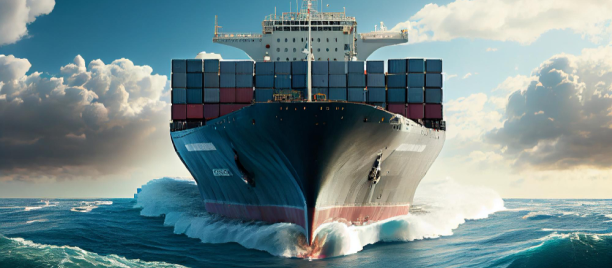
Demiryolu Taşımacılığında Neler Taşınır? Demiryolu taşımacılığı yüzyıllardır küresel ticaretin temel bir bileşeni olmuştur ve malların ve emtiaların ülkeler ve kıtalar…

Railway freight has been a fundamental component of global commerce for centuries, and it continues to play a pivotal role in the movement of goods and commodities across countries and continents. From raw materials to finished products, railway freight carries a wide range of cargo that keeps economies running and consumers supplied with essential items. In this blog, we'll delve into the world of railway freight and explore what is carried on these massive metal tracks.
One of the striking features of railway freight is its diversity. Railways can transport a wide variety of goods, including bulk commodities, manufactured products, and even hazardous materials. Let's break down some of the key categories of cargo carried by railway:
Bulk commodities are the lifeblood of the railway freight industry. These include coal, grain, iron ore, and other raw materials that are transported in large quantities. Coal, for example, is often transported by rail to power plants, where it's used to generate electricity. Grain is transported from farms to processing facilities, ensuring a steady food supply. The efficiency of rail transport is a crucial factor in keeping the cost of these essential goods affordable.
Railway freight also plays a vital role in transporting manufactured goods. Everything from automobiles to electronics and consumer products finds its way to market via rail. Manufacturers rely on railways to move their products efficiently over long distances. Rail transport is particularly well-suited for moving heavy and bulky items.
Materials like cement, steel, and lumber are essential for construction projects, and railways are often the preferred mode of transport for these goods. Trains can carry substantial loads, which makes them an efficient choice for moving the materials required for large-scale construction projects.
Railways also handle the transportation of chemicals, including hazardous materials. These materials are carefully regulated and require special precautions. The rail industry adheres to strict safety protocols to ensure the secure transportation of these goods. Petroleum products, such as crude oil and refined fuels, are also transported by rail. This is particularly important for regions without direct access to pipelines.
Intermodal freight combines rail transport with other modes, like trucks and ships. For example, containers loaded with goods can be transported by train to a port, then transferred to a ship for international delivery. Railways are a crucial link in global supply chains, ensuring the seamless movement of cargo between various transportation modes.
Railway freight has several advantages that make it an attractive option for transporting goods:
Efficiency:Trains can move large quantities of cargo over long distances in an energy-efficient manner. This efficiency reduces transportation costs and environmental impact.
Reliability:Railways offer a high level of reliability, with scheduled departures and arrivals, minimizing disruptions in the supply chain.
Reduced Congestion: By moving goods off the road and onto rails, railways help reduce traffic congestion and lower the risk of accidents.
Environmental Benefits: Rail transport is one of the most environmentally friendly modes of cargo transportation, emitting fewer greenhouse gases per ton-mile compared to trucks.
While railway freight is vital, it also faces challenges. Maintenance of tracks and infrastructure, regulatory compliance, and competition with other transport modes are ongoing concerns. However, railways continue to adapt, invest in modernization, and explore innovations like high-speed freight trains and autonomous technologies.
In conclusion, railway freight is a critical part of the global economy, moving a diverse range of cargo that keeps industries and consumers supplied. The efficiency, reliability, and environmental benefits of rail transport make it an indispensable component of the modern logistics network. As we look to the future, railways will continue to evolve to meet the ever-changing demands of the global marketplace, ensuring that goods continue to be carried efficiently and sustainably.

Demiryolu Taşımacılığında Neler Taşınır? Demiryolu taşımacılığı yüzyıllardır küresel ticaretin temel bir bileşeni olmuştur ve malların ve emtiaların ülkeler ve kıtalar…

Havayolu Taşımacılığı Terimleri ve Hava Kargonun Dünyası Havayolu taşımacılığı, hızlı ve etkili bir lojistik yöntemi olarak dünya çapında büyük öneme…

Denizyolu Taşımacılığı Terimleri ve Anlamları Denizyolu taşımacılığı, dünya ticaretinin önemli bir parçasını oluşturan ve büyük miktarda yükün taşınmasını sağlayan kritik…
sales@kitalogistics.com
germany@kitalogistics.com
almadm@kitalogistics.com
cis@kitalogistics.com
© 2023 KITA Logistics all rights reserved.